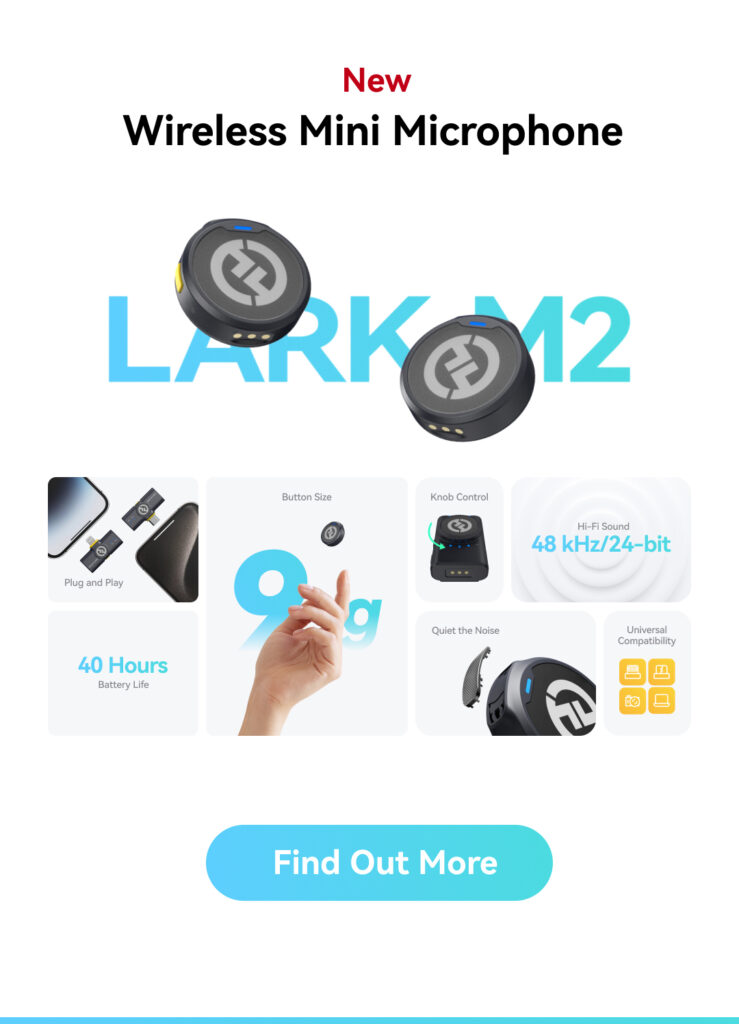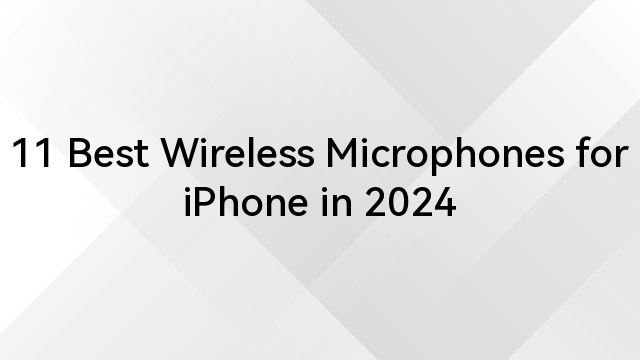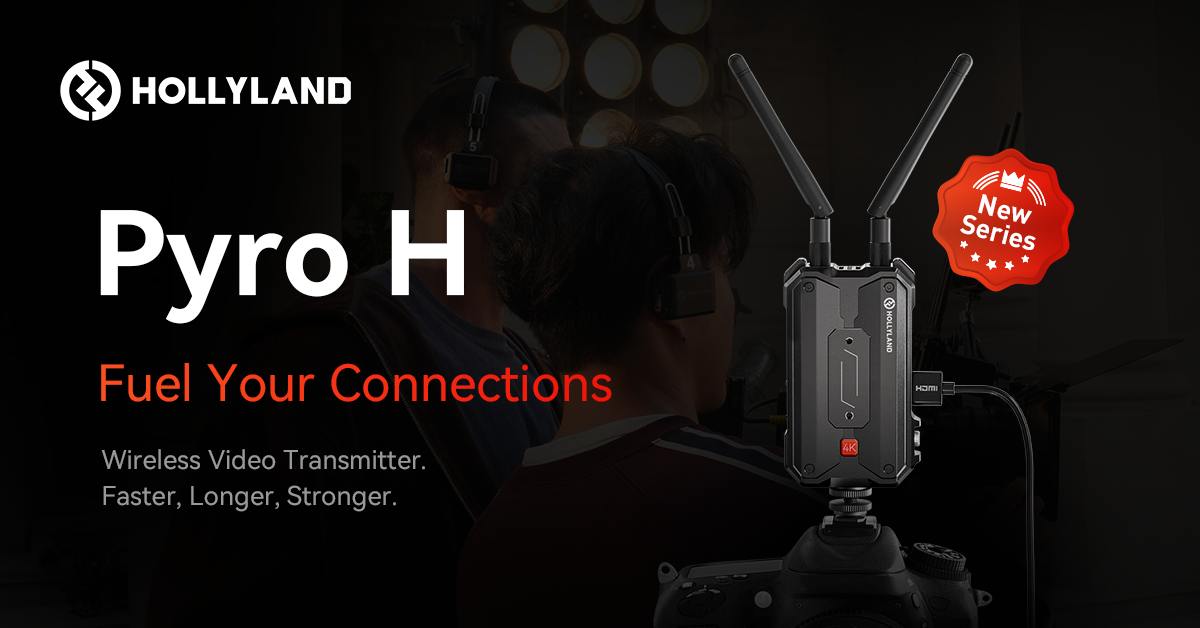You’re just getting into photography and looking to purchase your first mirrorless camera. With so many options on the market, it can feel overwhelming trying to decide which model is right for you. Especially since you are likely working within a budget as a complete newbie.
There are some hidden gem “dark horse” cameras out there that pack impressive features and performance well beyond their modest price tags. Discovering these cameras is like finding buried treasure.
For instance, the Sony ZV-E10, which despite its budget-friendly cost offers remarkable low-light capabilities, wide dynamic range, and cinema camera profiles. Rather than settling for an entry-level camera that leaves you wanting more, you can find a mirrorless camera that fits your budget and exceeds your expectations!
In this guide, we share the top eight beginner-friendly mirrorless cameras for 2024 that provide high-quality pro-level photos and videos without breaking the bank. Let’s get right into it!
1. Sony Alpha ZV-E10

What We Like
- Excellent 24MP APS-C sensor provides detailed images
- Great low-light performance
- Wide dynamic range captures more tones
- Fast, accurate autofocus
- 4K video utilizes oversampled 6K data
- Cinema color profiles for advanced grading
- Slow motion frame rates up to 120fps
- Flip-out touch screen for vlogging
- Compact, lightweight, and minimalist body
- Intuitive, straightforward operation
- Bluetooth and Wi-Fi connectivity
What We Don’t Like
- No flash hot shoe
The Sony ZV-E10 packs an impressive 24MP APS-C sensor into a compact, minimalist body. It has excellent dynamic range and low-light capabilities meaning it can capture rich detail and perform well in dim conditions. Its fast autofocus locks onto subjects quickly, while 4K video utilizes oversampled 6K data for stunning quality.
Equipped with cinema color profiles, the ZV-E10 enables you to do some pretty advanced color grading straight from the camera. Slow motion frame rates open creative options and a versatile flip-out touchscreen simplifies selfie shooting and vlogging.
The ZV-10 is simple yet powerful and it excels at both stills and video. The intuitive, streamlined design allows you to pick it up and start creating right away while still offering advanced control as skills progress. Add in Wi-Fi/Bluetooth connectivity, and it becomes easy to share content on the go.
With performance that punches above its weight, the ZV-E10 represents excellent value. Its portable form empowers you to capture great images and video wherever inspiration strikes. We think it is an outstanding first mirrorless camera to grow with on your creative journey.
2. Canon EOS R50 Mirrorless
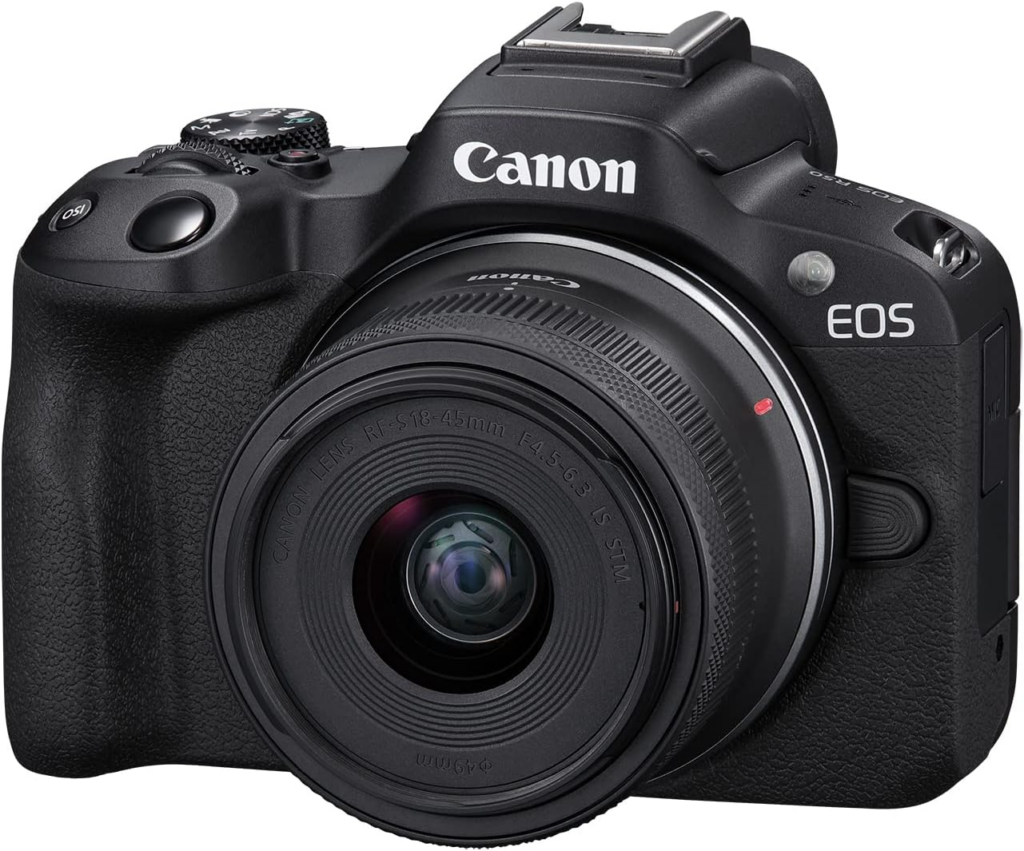
What We Like
- 24MP APS-C sensor captures vibrant images
- DIGIC X processor enables fast shooting
- Advanced Auto mode simplifies settings
- Shooting presets via the mode dial
- Built-in flash for low-light shots
- Dual Pixel II lightning-fast autofocus
- Subject tracking for people, pets, vehicles
- Crisp, detailed 4K video
- Slow motion 1080p video up to 120fps
- Flip-out touchscreen for creative angles
- Lightweight and portable body
What We Don’t Like
- No 10-bit color depth video
- Cropped 4K video (1.6x crop)
- No log profiles for video
Canon’s EOS R50 has an array of intuitive features in a portable body, making it a fantastic starter mirrorless. Its 24MP sensor captures vibrant detail, while the DIGIC X processor enables smooth 4K video and rapid-fire still shooting.
An advanced auto mode uses AI to optimize settings for any scene, simplifying operation for you as a beginner. It has approachable controls like the mode dial which provides shooting presets when getting started. The built-in flash floods dim scenes with light for blur-free images.
Dual Pixel II autofocus instantly locks onto subjects when shooting or filming while tracking modes maintain focus on moving people, pets, or vehicles in the frame. It is equipped with a handy flip-out touch screen that aids creative angles, selfies, and vlogging.
Bridging high image quality with straightforward handling, the R50 can let you hit the ground running while building photography skills over time as a novice. If you are a content creator, you will appreciate its strong video toolkit for detailed 4K and slow motion. It is a perfect entry point into the Canon mirrorless system.
3. Fuji XC30 Mark II Mirrorless
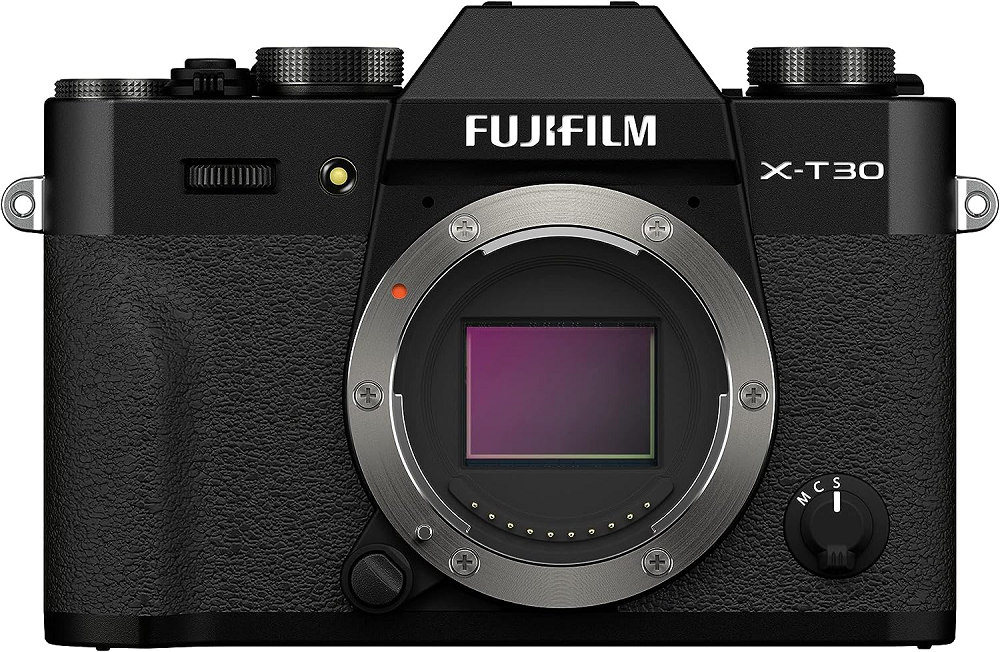
What We Like
- 26MP X-Trans sensor with vivid colors and low noise
- Classic film simulation modes
- Mechanical shutter up to 8fps
- Electronic shutter up to 30fps
- Strong 4K video quality
- F-Log and Fuji F-Tone color profiles
- Retro rangefinder design
- Physical dials for manual control
- Tilting touchscreen LCD
- Bluetooth and Wi-Fi connectivity
What We Don’t Like
- Autofocus is not as advanced as its rivals
- Single UHS-I SD card slot
- Smaller battery capacity
- Retro body is not for everyone
Fujifilm included its photographic pedigree into the retro-styled X-T30 Mark II mirrorless. Its unique 26MP X-Trans sensor renders images with film-like tonality, eliminating moiré without a low-pass filter. Vivid Fujichrome colors or cinematic black and white await thanks to long-established film emulations.
Its fast shooting mode comes courtesy of a quick electronic shutter, capturing 20fps without crop or 30fps cropped. Autofocus locks onto subjects in an instant even in dim light. While not best-in-class, you will find that it suits most scenarios as a novice. The dials provide direct manual controls for intuitive handling.
The X-T30 Mark II’s crisp 4K video utilizes the full sensor width, complete with the classic film looks. The high bitrate ensures excellent quality, while F-Log and Fuji F-Tone profiles ready footage for editing. Its handy rear tilt screen will help you with creative framing, with an AF lever simplifying shooting on the go.
The X-T30 II will let you cultivate your style as a new photographer by blending analog charm and digital versatility. Its compact, ergonomic form encourages you to take it everywhere while classic Fuji colors and tactile operation make it a joy to shoot with from day one.
4. Sony Alpha A6100 Mirrorless Camera

What We Like
- 24MP APS-C sensor captures detailed images
- Wide ISO range up to 51,200 for low light
- Rapid continuous shooting up to 11fps
- Advanced 425-point hybrid autofocus system
- Real-time eye AF and subject tracking
- Crisp, detailed 4K video
- 180° flip touchscreen for creative angles
- Mic jack for improved audio
- Compact and lightweight body
- Intuitive touch interface
What We Don’t Like:
- The screen not fully articulating
- No weather sealing
Sony has packed a lot of performance into the budget A6100 mirrorless, making it a versatile pick for new photographers like you. This beginner mirrorless camera’s headlining features include a 24MP APS-C sensor, 4K video recording, and an advanced autofocus system with real-time tracking.
Its rapid burst shooting up to 11 fps ensures you can capture fleeting moments. Sensitivity spans a wide ISO 100-32000 range for natural-looking results even in dim light. The touch flip screen is great as it assists even beginners try out creative angles and vlogging, while an EVF provides stability when shooting.
Sony’s renowned eye Auto Focus instantly locks focus on human or animal eyes for tack-sharp portraits. Real-time tracking maintains focus on moving subjects in the frame. As a beginner, these intelligent capabilities will take the guesswork out of achieving sharp focus while you learn to shoot.
If you are a videographer, you will appreciate the crisp 4K footage and mic jack for enhanced audio. The 180° flip screen enables vlogging and selfies with ease. While more advanced users may utilize its Log shooting modes, you as a beginner can simply select from multiple automatic presets to start filming quickly with consistent results.
Because it delivers sophisticated focusing so effortlessly, the A6100 removes a common frustration for novice photographers. Its compact, touch-friendly form makes it a daily companion camera, while the extensive feature set supports significant growth over time. It is A versatile package balancing automated ease and creative control.
5. Panasonic LUMIX G100 4k Mirrorless Camera

What We Like
- Designed specifically for vlogging
- Intuitive physical controls
- 20MP 4K-capable sensor
- Effective image stabilization
- Excellent autofocus tracking
- Compact and lightweight body
- Doubles as webcam for live streaming
- Large lens ecosystem available
- Wi-Fi and Bluetooth connectivity
- Hybrid mic with tracking audio
What We Don’t Like
- No weather sealing
- Lower resolution viewfinder
If you are looking for a versatile mirrorless camera that can grow with you, the Lumix G100 might be the one. The Panasonic Lumix G100 comes with a ton of features tailored for beginners and is packed into a small, easy-to-use body perfect for vlogging or all-around content creation.
Panasonic designed the G100 specifically with novice creators in mind. Its dedicated buttons provide quick access to key settings while intelligent auto modes handle the technical details, letting you focus on being creative. Exceptional image stabilization delivers shake-free video even when handheld walking.
A 20-megapixel sensor captures highly detailed stills and crisp 4K footage, ready to share online or extract high-resolution frames as photos. It has simple Wi-Fi connectivity making transferring content to your phone easy for editing and uploading. The camera even doubles as a webcam for live streaming PC calls or gaming.
While intuitive for beginners, it provides room to progress with full manual controls and a hot shoe for external mics and lights. The extensive Micro Four Thirds lens ecosystem offers loads of affordable, compact options that match the camera’s portable form.
If you’re seeking a creative outlet that goes beyond smartphone shooting, the well-rounded Lumix G100 gives you the power you need to explore both photography and videography. Its vlogging-oriented design encourages you to get out and start creating engaging content to share with the world!
6. Canon EOS RP Full Frame Mirrorless Camera

What We Like
- 26MP full-frame CMOS sensor
- Compact, lightweight body
- DIGIC 8 processor enables fast shooting
- Dual Pixel Autofocus with tracking
- 4K and Full HD video
- Fully articulating touchscreen LCD
- Focus bracketing for extended depth of field
- Webcam utility software support
- Affordable entry into full-frame
What We Don’t Like
- Cropped 4K video (1.6x crop)
- Only 5 fps continuous shooting
- Lower resolution EVF and rear LCD
The Canon EOS RP is loaded with a lot of capability into a petite package as Canon’s smallest full-frame mirrorless camera. Weighing just 17 ounces, it delivers professional-level image quality in a body that travels anywhere easily. It’s also intuitive enough for beginners.
This lightweight mirrorless camera has a 26MP sensor which captures abundant detail with gorgeous tonality. Its DIGIC 8 processor enables refined 4K video and fast burst shooting. Dual Pixel autofocus quickly achieves accurate focus for tack-sharp images thanks to advanced subject tracking.
Canon’s RF mount provides access to specialized lenses for optimal full-frame image quality. Some of its creative tools like focus bracketing extend depth of field through focus stacking. Available connectivity options enable live streaming thanks to utility webcam software support.
As an inexpensive entry point into full frame, the EOS RP packs advanced capabilities into its intuitive design. You can take advantage of its pro-oriented features to raise your skills over time if you are a newbie. Versatile yet simple, this mirrorless camera will let you start enjoying the artistic benefits of a larger sensor immediately without breaking the bank.
7. Olympus OMD M10 Mark IV

What We Like
- Lightweight, compact design
- In-body 5-axis image stabilization
- 20MP Live MOS sensor captures fine detail
- Fast 15 fps continuous shooting
- Improved autofocus tracking
- Flip-down LCD great for selfies and vlogging
- In-camera creative Art Filters
- 4K and C4K video options
- Bluetooth and Wi-Fi connectivity
What We Don’t Like
- Lower resolution viewfinder
- No mic or headphone jacks
As an elegantly designed Micro Four Thirds mirrorless, the Olympus OM-D E-M10 Mark IV blends style, portability, and approachable handling. It delivers impressive capability without being too bulky as it weighs just 383 grams. The sleek retro form exudes character while remaining compact for everyday carry.
Its 20MP Live MOS sensor enables you to capture vibrant stills and crisp 4K video, further enhanced by effective in-body stabilization. It has rapid burst shooting up to 15 fps which ensures fleeting moments get preserved. The flip-down LCD provides a versatile range of motion for selfies and vlogging, aided by dedicated modes.
This model has improved autofocus which maintains a sharp focus on subjects in motion, while its advanced Eye AF nails focus on portrait subjects. It has a range of art filters that let you get creative, applying stylized looks in-camera like nostalgic instant film or dramatic black and white. Built-in Wi-Fi makes sharing your creations a breeze.
Olympus perfected the formula for travel-friendly mirrorless cameras, packing power into portable packages without compromising image quality. The E-M10 Mark IV lets photography newcomers like you enjoy this advantage from the start. Its charming design encourages you to take it everywhere, capturing life’s spontaneity in high resolution.
8. Canon EOS M50 Mark II
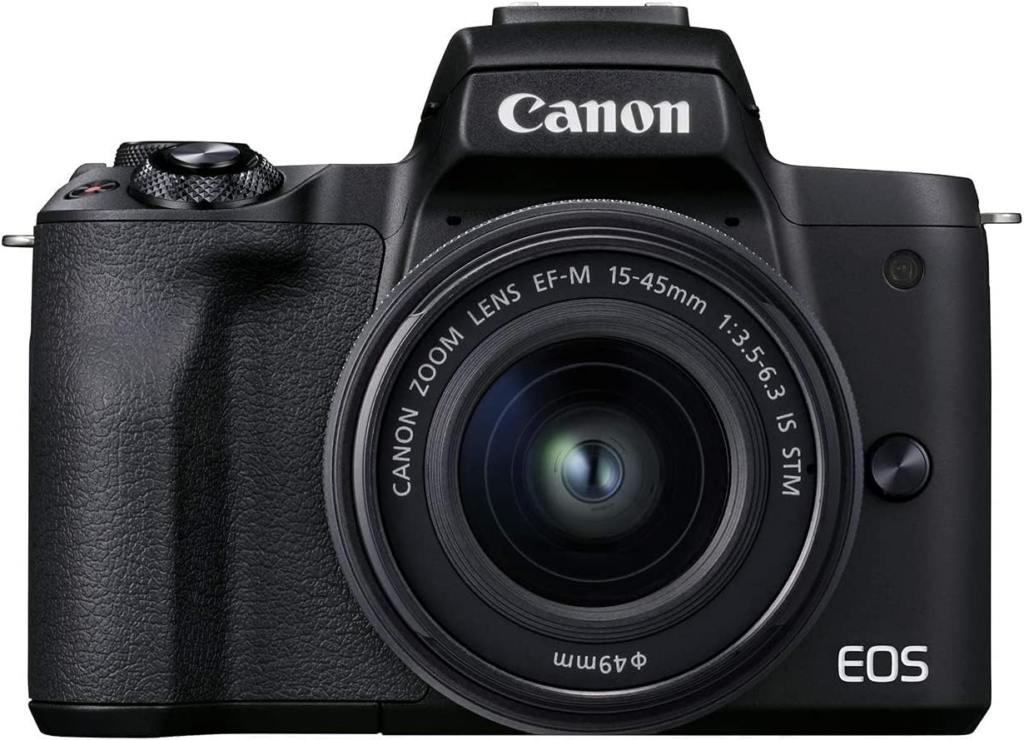
What We Like
- 24MP APS-C image sensor
- Fast 10 fps continuous shooting
- 4K 24p and 120p HD video
- Vertical video orientation
- Vari-angle touchscreen LCD
- Mic jack for better audio
- Dual Pixel AF with eye-detect
- Compact portable design
What We Don’t Like
- Cropped 4K video coverage
- Lower resolution EVF/LCD
- Limited battery life
Tucked inside Canon’s petite M50 Mark II is serious imaging power catering to both stills and video content creation. Its streamlined design places comprehensive controls at your fingertips, enabling easy operation whether you’re a beginner or a more advanced user.
The 24MP sensor delivers abundant detail and dynamic range, while fast 10fps burst shooting ensures fleeting moments get captured. It is equipped with enhanced Dual Pixel autofocus which quickly achieves accurate focus for sharp images thanks to intelligent eye and subject tracking.
If you are a mirrorless vlogger, you will love the vertical video orientation option for shooting social media content alongside crisp 4K 24p footage and 120p slow-motion capabilities. The built-in mic jack improves audio capture while the excellent EF-M lens range enhances versatility for different styles of shooting.
Canon has managed to pack pro-level potential into the M50 Mark II without intimidating menus and convoluted controls. Its portable form and simple interface encourage you to pick it up and start creating. The comprehensive feature set supports significant growth over time whether your passion trends toward still photography or video.
Table: Comparing the features and capabilities of the 8 beginner-friendly mirrorless cameras for 2024
| Feature | Sony ZV10 | Canon R50 | Fuji XC30 Mark II | Sony A6100 | Panasonic Lumix G100 | Canon EOS RP | Olympus OMD M10 Mark IV | Canon EOS M50 Mark II |
| Sensor Type/Resolution | APS-C, 24MP | APS-C, 24MP | APS-C, 26MP (x-trans 4) | Four Thirds, 20.3MP | Full-frame, 26.2MP | Micro Four Thirds, 20MP | APS-C, 24.1MP | |
| Low-Light Performance | Pixel structure for low light | Nighttime mode for low light | Film emulation for cinematic colors | 5-axis hybrid image stabilization | Generous ISO range (125-6400) | Improved in-body image stabilization | ISO range 125-25600, Low-light conditions | |
| Autofocus | Phenomenal autofocus | 10 out of 10 autofocus | Good autofocus (rated 7.5) | Improved focusing performance | Intelligent facial recognition | Improved Continuous AF | 10 fps burst rate, No in-body stabilization | |
| Frame Rate (Photos) | 10 fps | 12-15 fps | 8 fps (mechanical) / 20-30 fps (electronic) | 10 fps burst rate | 15 fps burst shooting mode | 10 fps burst rate | ||
| Video Resolution | 4K (super-sampled from 6K) | 4K (super-sampled from 6K) | 4K | 4K 30p | 4K 30p | 4K | 4K | 4K 30p |
| Slow Motion (HD) | 60fps, 120fps | 60fps, 120fps | 60fps, 120fps | Up to 120 fps | 15 fps burst shooting mode | Vertical video recording | ||
| Color Profiles (Video) | Cinema profiles built-in | No Cinema profiles | Fuji Turnout, Fuji F-Log | No Cinema profiles | Art filter mode | No in-body image stabilization | ||
| Body Design | Minimalistic, onboard mic | Standard DSLR/mirrorless design | Retro camera body design | Compact design | Impressive viewfinder, ergonomic structure | Compact and versatile design | Elegant design, Tilt-down monitor | Compact and portable design |
| Viewfinder | No | Electronic | No (depends on model) | No | Yes (impressive viewfinder) | Yes (Electronic viewfinder) | No | No (user-friendly guide mode) |
| Flash | No (for photos) | Yes (for photos) | No (for photos) | Yes (built-in flash) | No in-body image stabilization | |||
| Unique Features | Pixel structure for low light, Cinema profiles | Automatic plus mode, HDR mode, Canon colors | Film emulation colors, Retro design | Selfie-friendly monitor | Dedicated sharing button | Compact form factor | Improved in-body image stabilization | User-friendly guide mode |
| Advantages | Good low-light performance, Compact design | Automatic plus mode, True-to-life colors | Unique film emulation colors, Retro design | Improved touchscreen, Compact design | Ideal for vlogging and creatives | Affordable entry into full-frame capabilities | Upgraded 20MP sensor, Tilt-down monitor | High burst rate, Vertical video recording |
Factors to Consider When Shopping for A Beginner Mirrorless Camera
Here are 5 key things you must take into account as a beginner when shopping for your first mirrorless camera:
1. Intuitive Controls and Menus
As a beginner, you want an interface that is straightforward to operate so you can focus more on learning composition and technique rather than digging into confusing menus. Prioritize cameras highlighted as having an accessible layout with labeled dials/buttons. Touchscreens also simplify changing settings.
2. Compact, Lightweight Body
Mirrorless cameras tend to be more compact and portable than DSLRs. As a new photographer, having a camera you can carry conveniently makes you more likely to have it with you to capture spontaneous moments.
3. Strong Image Quality
A 20-24MP APS-C sensor offers plenty of detail for large prints and cropping flexibility. Also, consider an expanded ISO range for low-light shooting. Features like dynamic range, fast processors, and metering modes also aid in getting properly exposed, quality images.
4. Shooting Assistance Modes
Intelligent auto modes, guided interfaces, in-camera filters, and presets enable you to get great shots while learning manual controls at your own pace. Also, creative modes expand possibilities as your skills improve.
5. Reliable Autofocus Performance
Chasing focus on moving subjects is frustrating. Prioritize cameras with features like eye/face detection, subject tracking, and depth detection to take this complexity off your hands so you get sharp results.
Final Remarks
You can’t go wrong with any of the mirrorless cameras we have covered in this guide. The best beginner cameras balance simplicity with modes to explore creativity. Once mastering the basics, they provide room to grow your skills over time. Take time to study what each of the eight has to offer and choose one (or two) to start with. Enjoy your mirrorless!
FAQ
How Much Do I Need to Spend on My First Mirrorless Camera?
You can get very capable starter mirrorless cameras in the $500 to $800 range. However excellent options exist even below $500 if you’re on a tight budget. Paying more provides additional features but isn’t a must to get started.
What Accessories Are Essential to Purchase Alongside My First Mirrorless?
At a minimum, purchase an extra battery and memory card suited for your camera (SDXC for most models). Once those basics are covered, explore add-ons like bags/straps, remote triggers, gimbals, external mics/lighting, etc.
Should I Buy Used Models to Save Money as A Beginner?
When starting, buying used current-generation cameras still under warranty provides great value. However carefully inspect the condition of the used camera first. On the other hand, buying new gives peace of mind and a full manufacturer’s warranty.
How Important Is In-Body Image Stabilization for A First-Time Buyer?
IBIS provides up to 5 stops of shake reduction with any lens. This allows sharp images handheld with slower shutter speeds. However, it isn’t an absolute necessity for beginners, and lenses/cameras offer stabilization too.
Mirrorless Cameras Keep Improving Quickly. Should I Wait To Buy?
Don’t delay buying and waiting for the “next big thing” – you’ll never start otherwise. Cameras tend to see modest iterative updates annually. Skill development takes significant time so buy based on needs today knowing new models will always come.



